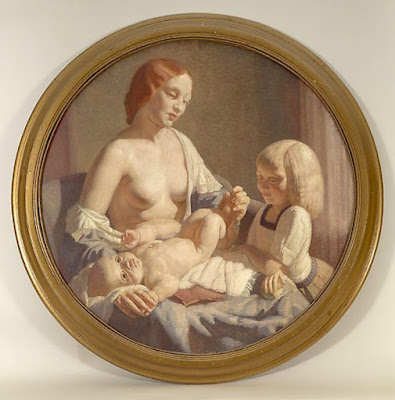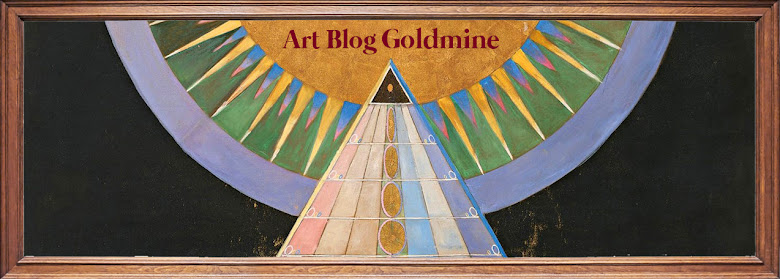Sensuality
Blessed with fertile land, Australians cultivated an abundant life of materialistic pleasure. Such prosperous life greatly influenced Australian modern artists and their works. Many artists regarded that the voluptuous and muscular forms of Australians reflected the rich country's power. Thus, they celebrated the physical beauty of Australians by preserving them in their paintings. In their works, they often related sensuality with procreation and nurture, linking back to the role of fecund Australian land to settlers. To capture the nourished beauty, they incorporated techniques from European classical art and avant-garde. |
Charles Meere, Australian beach pattern, 1940, Oil on canvas |
 |
| Charles Meere, Atalanta's eclipse, 1938, Oil on canvas |
The artist contributed to cultivating Australian modern art by painting works inspired by the art nouveau of the European avant-garde. One of his art deco masterpieces is Australian Beach Pattern, which was painted during the interwar period. Though full of enigma, the masterpiece is interpreted as a celebration of a healthy young nation's beach culture and a glorification of heroic racial purity.
 |
Jean Broome-Norton, Abundance, 1934, cast 1987, Bronze |
In the exceptional art-deco relief 'Abundance', a wholesome and athletic Australian family is presented. By adding the child, the artist relates sensuality to procreation and fecundity of the bodies. Sheaves of wheat and a wreath are rich provisions from the fertile land of Australia. As the family's body is from the food, the artist expresses gratitude towards the bountiful nature. The work reinforces notions of Australian life as a golden age of physical and environmental harmony.
 |
Arthur Murch, The idle hour, 1933, Oil on canvas on hardboard |
The artist associates sensuality with the sublime by showing the role of a mother as a nurturer of a family. To create images of national culture, the artist depicts Australian modern life by employing classical traditions of European art.
Thank you for finish reading the article. It is the last article of modern art chapter in the comprehensive study on Australian Art. The study is divided into three chapters according to era: classical, modern and contemporary. To view the complete list of the articles within the study, please direct to the linked article.
To support Art Blog Goldmine:
- Browse and read articles of similar topics in Art History: Modern
- Subscribe to the blog via RSS feed
- Follow Twitter for must-know art history facts and key art world news
- Recommend the blog to art enthusiast communities




No comments:
Post a Comment